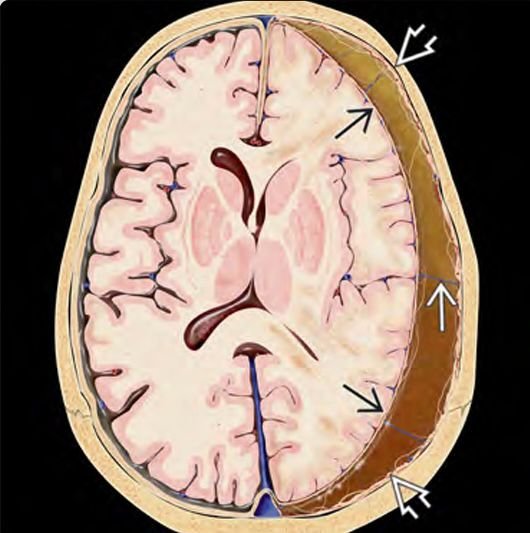Intracerebral Hematoma
Intracerebral Hematoma
Intracerebral Hematoma (ICH) in children is a serious neurosurgical emergency that involves bleeding directly into the brain tissue. This condition can result from traumatic brain injury (TBI), vascular malformations, bleeding disorders, or spontaneous causes. In the pediatric population of Bangladesh, trauma-related intracerebral hematoma remains a common cause due to rising rates of road traffic accidents, falls, and accidental injuries. Prompt diagnosis and specialized pediatric neurosurgical treatment are vital to minimize brain damage, reduce complications, and improve the chances of full recovery. What is Pediatric Intracerebral Hematoma? An intracerebral hematoma refers to the localized collection of blood within the brain parenchyma. This accumulation causes pressure on surrounding brain tissues, leading to neurological impairment. In children, due to the pliability of the skull and developing brain, the effects of an ICH can be severe and rapidly progressive. Causes of Intracerebral Hematoma in Children in Bangladesh Traumatic Brain Injury: Leading cause, mostly from road traffic accidents (motorcycle, rickshaw, pedestrian injuries), falls, and blunt trauma Vascular Anomalies: Arteriovenous malformations (AVMs), cavernous malformations, or aneurysms Bleeding Disorders: Hemophilia and other coagulation defects common in pediatric patients Infections: Brain abscess rupture or infectious vasculitis Spontaneous Hemorrhage: Rare but possible due to hypertension or brain tumors Symptoms and Clinical Presentation Symptoms of intracerebral hematoma in children vary depending on the size and location of the bleed but generally include: Sudden onset of headache and vomiting Altered consciousness, ranging from confusion to coma Focal neurological deficits such as weakness, numbness, or paralysis on one side of the body Seizures or convulsions Difficulty speaking or understanding speech Visual disturbances or abnormal eye movements In infants, symptoms may include bulging fontanelle, excessive irritability, or feeding difficulties Diagnosis Accurate and timely diagnosis of pediatric intracerebral hematoma involves: CT Scan of the Brain: The primary imaging tool for rapid detection of hematomas, their size, and location. MRI Brain: Provides detailed brain tissue imaging and helps identify underlying vascular lesions or tumors. Blood Tests: To check for coagulation status and possible infectious causes. Neurological Examination: Pediatric Glasgow Coma Scale (GCS) and assessment of motor and sensory function. Angiography: In selected cases to evaluate vascular abnormalities. Treatment Approach by Dr. Md. Nafaur Rahman Medical Management Close monitoring in Pediatric Intensive Care Unit (PICU) Control of intracranial pressure with medications such as mannitol or hypertonic saline Management of seizures with anticonvulsants Supportive care including oxygenation, hydration, and pain relief Correction of underlying coagulopathies if present Surgical Intervention Surgical evacuation of the hematoma may be required in cases with large hematomas causing significant brain compression or neurological deterioration Techniques include craniotomy or minimally invasive surgery tailored for pediatric patients Management of associated skull fractures or brain swelling Postoperative neurocritical care and rehabilitation Prognosis and Long-Term Outcomes The prognosis depends on factors such as the size and location of the hematoma, time to treatment, and the child’s overall health. Early surgical intervention and advanced pediatric neurosurgical care improve survival rates and functional outcomes. Long-term follow-up includes: Neurodevelopmental assessments Physical and occupational therapy for motor deficits Cognitive and behavioral rehabilitation Regular imaging to monitor for recurrence or complications Pediatric Neurosurgical Care in Bangladesh Bangladesh faces challenges related to pediatric head trauma and intracerebral hemorrhage due to increasing accidents and limited specialized centers. Dr. Md. Nafaur Rahman offers expert pediatric neurosurgical evaluation and treatment, combining modern technology with compassionate care, including: Advanced neuroimaging and surgical facilities at NINS Expertise in pediatric brain injury and hemorrhage management Multidisciplinary approach with neurology, critical care, and rehabilitation teams Family counseling and education to prevent secondary injury Contact Information for Expert Care 📌 Dr. Md. Nafaur Rahman Assistant Professor, Pediatric Neurosurgery, National Institute of Neurosciences & Hospital (NINS) Chief Consultant, Bangladesh Paediatric Neurocare Centre 📞 Appointments & Emergency Contact: 📱 +8801912988182 | +8801607033535 🌐 Website: www.neurosurgeonnafaur.com
YouTube Videos and Patient Reviews on Intracerebral Hematoma










